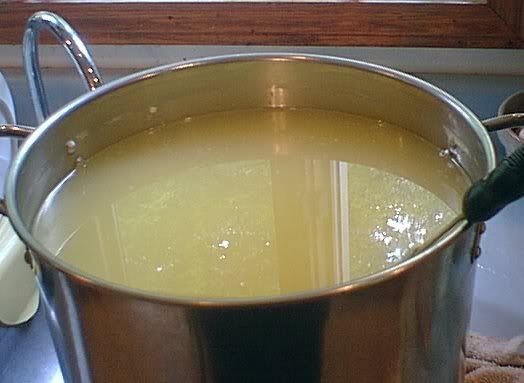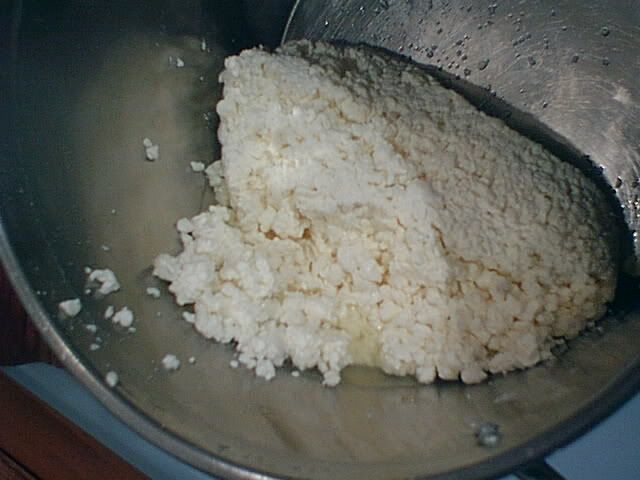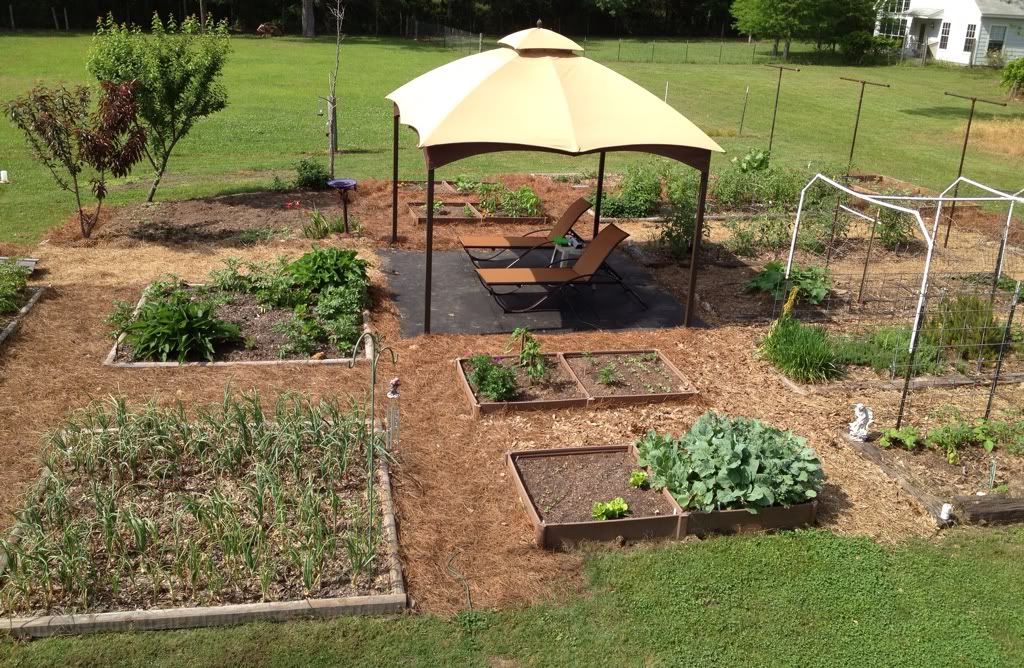Post by Deleted on Jun 12, 2006 21:52:32 GMT -5
This is a rich, flavorful cheese. I age it 60 to 90 days, but I made lots and lots of it last lactation and had enough that I was able to let some age for six and seven months. It just gets better and better with age.
Very simple.
I will use a 2 gallon recipe for ease of explanation.
Bring milk to room temperature or use milk straight from the cow.
You can take the cream from chilled milk first, or leave it in. I make it both ways and label it so I know how I did it.
Add four ounces of culture or one packet of Direct Set culture. (Keeping in mind the necessity of stirring your own culture until it is lump free before adding it to the milk.)
Cover and leave for one hour to two hours. I aim for one hour, but ......
Mix 1/2 tsp of rennet with 1/4 cup cool water and add to the milk.
Leave for about an hour.
Cut the curd. Leave it for 1/2 hour or longer.
Stir and cut any large curds that stir up.
For the next four to five hours, give the curds a stir everytime you think of it - aiming for every twenty minutes or so.
This is how it looks between stirrings:

Don't drain. Don't rinse. Just stir, stir, stir. Sometimes, it can get to be an hour between stirrings here. If the curds have clumped some, I break them up with the spoon.
This is how it looks when you have stirred it.

This is what the curds will look like when they are "done" and ready for the press.

When the curds are ready, drain off the whey and add 3 tablespoons of salt. Line the mold with cheesecloth and spoon in the salted curds. Press one time for 18 to 24 hours at 40 to 50 pounds. Remove from the press and air dry in the refr. for a couple days, or until dry enough to wax.
Wax and age for 60 to 90 days. (I am hoarding a few that have now gone past 12 months.)
Everything you do different will give this cheese its variations. Leaving the cream in makes a different cheese than when you take out the cream. Longer culturing time changes it some, too.
Review:
Room temp. milk.
culture
wait
rennet
wait
cut curd
wait
stir, stir, stir, stir, stir, stir...........
salt
mold
press
dry
wax
As you would imagine, not rinsing the curd (like in the other cheese) -which dilutes the whey that the curds are sitting in during the make - imparts an intensity of flavor to this cheese.
The curds sit in the same whey from the time it is cut to the time it is drained.
Hopefully, I will come back and edit this post by putting in the pictures that I have in PhotoBucket.
homestead2
Very simple.
I will use a 2 gallon recipe for ease of explanation.
Bring milk to room temperature or use milk straight from the cow.
You can take the cream from chilled milk first, or leave it in. I make it both ways and label it so I know how I did it.
Add four ounces of culture or one packet of Direct Set culture. (Keeping in mind the necessity of stirring your own culture until it is lump free before adding it to the milk.)
Cover and leave for one hour to two hours. I aim for one hour, but ......
Mix 1/2 tsp of rennet with 1/4 cup cool water and add to the milk.
Leave for about an hour.
Cut the curd. Leave it for 1/2 hour or longer.
Stir and cut any large curds that stir up.
For the next four to five hours, give the curds a stir everytime you think of it - aiming for every twenty minutes or so.
This is how it looks between stirrings:

Don't drain. Don't rinse. Just stir, stir, stir. Sometimes, it can get to be an hour between stirrings here. If the curds have clumped some, I break them up with the spoon.
This is how it looks when you have stirred it.

This is what the curds will look like when they are "done" and ready for the press.

When the curds are ready, drain off the whey and add 3 tablespoons of salt. Line the mold with cheesecloth and spoon in the salted curds. Press one time for 18 to 24 hours at 40 to 50 pounds. Remove from the press and air dry in the refr. for a couple days, or until dry enough to wax.
Wax and age for 60 to 90 days. (I am hoarding a few that have now gone past 12 months.)
Everything you do different will give this cheese its variations. Leaving the cream in makes a different cheese than when you take out the cream. Longer culturing time changes it some, too.
Review:
Room temp. milk.
culture
wait
rennet
wait
cut curd
wait
stir, stir, stir, stir, stir, stir...........
salt
mold
press
dry
wax
As you would imagine, not rinsing the curd (like in the other cheese) -which dilutes the whey that the curds are sitting in during the make - imparts an intensity of flavor to this cheese.
The curds sit in the same whey from the time it is cut to the time it is drained.
Hopefully, I will come back and edit this post by putting in the pictures that I have in PhotoBucket.
homestead2







